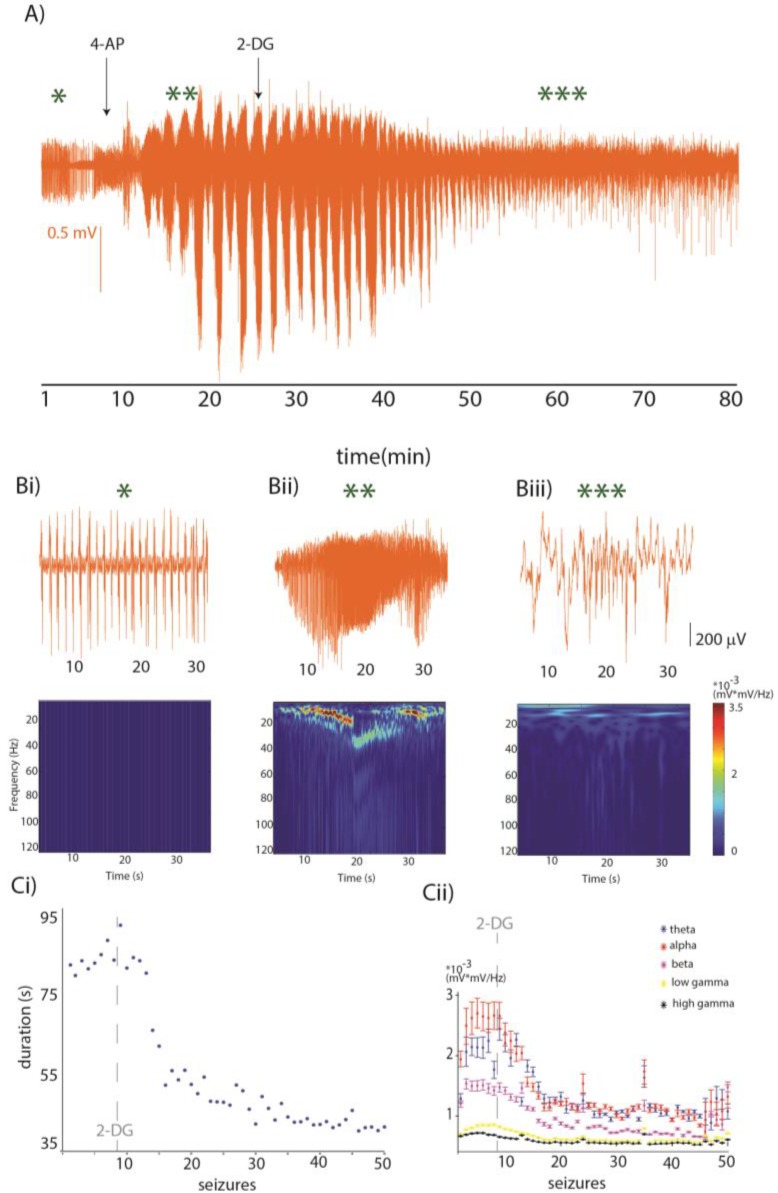Figure 2.
(A) Local Field potential recordings (orange) and extracellular potassium concentration (in purple); approximately 3 min following 4-Aminopyridine (4-AP) administration (arrow) recurrent seizures appear. Fifteen minutes after the first seizure, 2-deoxy-d-glucose (2-DG) is injected intraperitoneally. In the minutes to hours following 2-DG administration, seizures were reduced in duration and power, accompanied by a decrease in Ke. In (Bi) representative segment of field potential recording during baseline in orange and (below) its wavelet transform, (Bii) representative field potential recording during a 4-AP seizure in orange and (below) its wavelet transform, (Biii) representative field potential recording of a seizure in orange ~35 min following 2-DG administration and (below) its wavelet transform; (Ci) the duration of every seizure is plotted 4-AP seizures (n = 8) have an average duration of 85.1 ± 25.4 s. Following 2-DG, seizure duration is reduced. (Cii) uring 4-AP seizures (n = 8), the average power increase from the mean baseline power was 48.2 ± 6.2% in theta (p < 0.005), 19.9 ± 8.8% in alpha (p < 1 × 10−5), 104.5 ± 12.1% in beta (p < 1 × 10−5), 128.1 ± 5.9% in low gamma (p < 1 × 10−5) and 179.5 ± 9.2% in high gamma (p < 1 × 10−5). Thirty minutes following 2-DG administration, the average power of eight seizures decreased of 73.1 ± 10.1% in theta (p = 0.002), 90.6 ± 21.3% in alpha (p = 0.001), 108.8 ± 14.2% in beta (p < 1 × 10−5), 100.3 ± 31.2% in low gamma (p < 1 × 10−5) and 106.7 ± 21.5% in high gamma (p < 1 × 10−5) from the average power during 4-AP.

